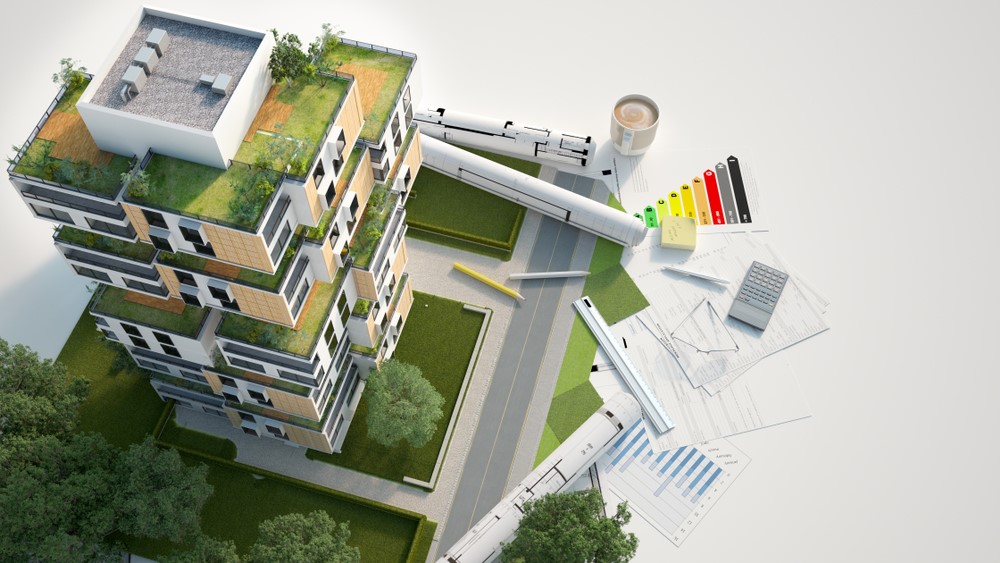Sustainable buildings: How sustainability adds value to your building
The future of the construction industry is green with sustainable buildings: How sustainability adds value to your building.
The future of the construction industry is green, with the UK government announcing plans to achieve net zero emissions by 2050. Construction companies have also begun to consider how to lower their carbon footprint. According to a report by the WBCSD, the construction industry should follow the embodied carbon reduction strategy. This means repurposing material when possible, rather than using raw materials. By repurposing materials, construction companies can reuse materials and minimise waste. This will ensure sustainability stays at the forefront of construction.
This article will explore the importance of sustainable buildings within the construction sector. We’ll also look at how sustainability can add value to your building.
The importance of sustainable buildings
The construction industry is responsible for up to 11% of global carbon emissions. To combat this, the National Engineering Policy Centre stated that the sector must reduce carbon emissions by 78% before 2035. This includes all stages of production, from sourcing materials to generating electricity during construction.
The Green Building Council has urged the construction industry to limit emissions of embodied carbon. As well as taking part in carbon offsetting projects, the report recommends actions to decarbonise construction. The recommendations include retrofitting existing homes, investing in industrial decarbonisation, and adopting a minimum standard of key appliances for new buildings.
How sustainability can add value to your building
Whether you’re installing carbon-saving gadgets or redesigning an entire building, sustainability in construction has many forms. Here are three ways this will add value to your building.
Rainscreen cladding will insulate buildings
A protective layer that sits on the outside of a building, rainscreen cladding provides direct protection against the weather. The outer layer stops rain, while the inner layer improves the structural integrity and insulation of buildings.
This is a great way to add value to your building while also being environmentally conscious in your design. Rainscreen cladding is capable of reducing energy costs in both domestic and commercial buildings, saving up to 40% of bills per year. As well as being economically conscious, this will stop people overusing heating. In turn, the amount of carbon dioxide emitted into the atmosphere will reduce.
Solar panels will boost the price of domestic buildings
Solar panels harness energy from the sun and generate electricity to power buildings. As well as being environmentally conscious, solar panels are a cost-effective energy source. According to a study by the Green Match, a 6kW solar panel grid can save a homeowner an average of £430 on electric bills within a year. This is an attractive selling point to anyone!
It comes as no surprise that installing solar panels can boost the price of domestic buildings by 14-38% within the UK. This varies depending on where the property is and could add £90,000 to a London home or £40,095 to an Edinburgh home. Regardless of location, incorporating solar panels in your design is a great way to be sustainable and add value to your property.
Investors will prioritise sustainable buildings
There are many good-natured reasons to build with sustainability in mind. Creating a future free from carbon emissions is only one of those. On top of that, investors are prioritising sustainable buildings, so it pays to think sustainably about buildings. In fact, out of 4,000 workers in the construction and commercial property sector, 55% believed that investors were more concerned with sustainability in buildings than the year before. As the market for sustainable buildings continues to change, it’s a good idea to build with a green future in mind.
Overall, sustainability adds value to your building. Considering its cost-effectiveness and green-attractiveness, we can see why. As the government pledges to reach net zero, the construction industry continues to adapt to new ways of operation. How will you build with sustainability in mind?
Sources:
https://www.gov.uk/government/news/uks-path-to-net-zero-set-out-in-landmark-strategy
https://www.designingbuildings.co.uk/wiki/Rainscreen
https://rcimag.co.uk/gl-roofing/five-key-benefits-of-rainscreen-cladding
https://www.greenmatch.co.uk/blog/2014/06/solar-panels-are-they-worth-it
https://www.theecoexperts.co.uk/solar-panels/property-value
Kindly shared by Sotech

















